Camping option available on request with a minimum of 6 Pax, guaranteed departure any day of the week.
Trip Info
-
Minivan, Modified Safari Vehicle, 4x4 D/Cab, 4x4 SUV
-
3 Star Hotels, Lodges, Guesthouses
-
Dinner, Bed and Breakfast
-
Scheduled Accommodated Tour
-
English, German, French, Spanish
-
Easy to Moderate
-
Min: 2 & Max: 12
-
All year round
-
Windhoek City
-
Windhoek City
-
12
-
75
Overview
Explore three wonders of nature, visiting the Kalahari Desert; Experience its diverse and stark landscape, rich in plant, animal and bird life. There are over thirty different species of game to be found on this semi-desert savannah. Spectacular Sossusvlei, a perfect specimen of Namibia’s unspoilt desert beauty.
This photogenic area is famous for its large, red sand dunes, which are some of the tallest sand dunes in the world and is one of Namibia’s most visited attractions. Swakopmund, one of those great traveler way stations along the African road. Namibia’s adventure capital and a surreal colonial remnant. Out of season, Swakopmund can feel like a holiday town along Germany’s North Sea and Baltic coasts transplanted onto African soil. This trip departs from Windhoek every Tuesday morning.
Trip Highlights
- Experience its diverse and stark landscape, rich in plant, animal and bird life.
- Spectacular Sossusvlei, a perfect specimen of Namibia’s unspoilt desert beauty.
- Swakopmund, one of those great traveler way stations along the African road and adventure capital.
Itinerary
This morning, A Tour Guide from Nali Safaris will collect you from your various accommodation establishments or from the Windhoek International Airport (assuming you land before 08h00). You then depart Windhoek in your safari vehicle with your private guide and head to the majestic beauty of Southern Namibia, The Kalahari Desert. Experience its diverse and stark landscape, rich in plant, animal and bird life. There are over thirty different species of game to be found on this semi-desert savannah.
The Kalahari Desert: In Namibia it forms part of the 2.5 million square meter large Kalahari Basin, one of the largest coherent sand expanses worldwide. The central parts of the Kalahari Basin consists of the Kalahari Savanna also known as the Kalahari Desert. In contrast to the high sand dunes in Sossusvlei in the Namib Desert, the look of the Kalahari is characterized by little grass clumps and red dunes. They are not very high but long and have a sharp crest. Spot African wildlife like Black-maned Kalahari Lion, Oryx, Giraffe, Warthog or little Meerkat (Suricate) on game-drives or just enjoy the silence around you.
This area in Namibia is inhabited by the San people (Namibian bushmen), who used to be hunter-gatherers. They are now surviving by game hunting and collecting edible plants, like berries or desert melons.
Overnight: Lapa Lange Game Lodge or similar
You then depart The Kalahari driving west through passing through small towns of Mariental, Maltahohe and the scenic Tsaris highlands before heading down the Great Escarpment into the Namib Desert below, stopping for a picnic lunch at a scenic location along the way. You arrive at Dead Valley Lodge in the afternoon and you will stay here for two nights whilst you explore the remarkable sights of the Namib Desert with your guide. Relax and soak in the scenic and tranquil surroundings at Dead Valley Lodge.
Sesriem Canyon: Sesriem Canyon has evolved through centuries of erosion by the Tsauchab River which has incised a narrow gorge about 1.5 km long and 30 meters deep into the surrounding conglomerates, exposing the varying layers of sedimentation deposited over millions of years. The shaded cool depths of the canyon allow pools of water to gather during the rainy season and remain for much of the year round. These pools were a vital source of water for early settlers who drew water for their livestock by knotting six (ses) lengths of rawhide thongs (riems) together, hence the canyon and surrounding area became known as Sesriem.
Overnight: Dead Valley Lodge or similar
This morning you will need to rise early for a magical excursion with your guide in the Namib Naukluft National Park, normally setting off before sunrise to capture the dunes whilst the light is soft and shadows accentuate the towering shapes and curves. This area boasts some of the highest free-standing sand dunes in the world and your guide will give you an insight on the formation of the Namib Desert and its myriad of fascinating creatures and plants that have adapted to survive these harsh environs. Once you have explored Sossusvlei, Deadvlei and surrounding dune fields to your heart’s content you return to the Lodge in the early afternoon in time for lunch, with the option to visit Sesriem Canyon.
After early lunch, we depart our way through the fascinating route that takes you northwest through awesome and ever changing desert landscapes of the Namib Naukluft National Park, including the impressive Gaub and Kuiseb canyons. You will meet the coast at the port town of Walvis Bay and then continue north to Swakopmund where you can enjoy the pleasant seaside location and cooler coastal air for your next two nights. There will be time this afternoon to explore the town and wander along the waterfront on foot, before heading off for dinner at a popular restaurant which specializes in locally harvested seafood.
Sossusvlei: This most frequently visited section of the massive 50,000 km² Namib Naukluft National Park has become known as Sossusvlei, famous for its towering apricot coloured sand dunes which can be reached by following the Tsauchab River valley. Sossusvlei itself is actually a clay pan set amidst these star shaped dunes which stand up to 300 meters above the surrounding plains, ranking them among the tallest dunes on earth.
The deathly white clay pan contrasts against the orange sands and forms the endpoint of the ephemeral Tsauchab River, within the interior of the Great Sand Sea. The river course rises south of the Naukluft Mountains in the Great Escarpment. It penetrates the sand sea for some 55 km before it finally peters out at Sossusvlei, about the same distance from the Atlantic Ocean. Until the encroaching dunes blocked its course around 60,000 years ago, the Tsauchab River once reached the sea; as ephemeral rivers still do in the northern half of the Namib.
Sand-locked pans to the west show where the river previously flowed to before dunes shifted its endpoint to where it currently gathers at Sossusvlei. Roughly once a decade rainfall over the catchment area is sufficient to bring the river down in flood and fill the pan. On such occasions the mirror images of dunes and camel thorn trees around the pan are reflected in the water. Sossusvlei is the biggest of four pans in the vicinity. Another, famous for its gnarled and ghostly camel thorn trees, is Deadvlei which can be reached on foot over 1 km of sand. Deadvlei’s striking camel thorn trees, dead for want of water, still stand erect as they once grew. They survived until about 900 years ago when the sand sea finally blocked the river from occasionally flooding the pan.
Swakopmund: Swakopmund resembles a small, German coastal resort nestled between the desert and the sea. It boasts a charming combination of German colonial architecture blended with modern hotels, shops, restaurants, museums, craft centres, galleries and cafés. Swakopmund had its beginnings as a landing station in 1892 when the German Imperial Navy erected beacons on the site. Settlers followed and made attempts to create a harbor town by constructing a concrete Mole and then an iron jetty – which attempts were ultimately unsuccessful.
The advent of World War one halted developments, and the town sank into decline until half a century later when infrastructure improved and an asphalt road opened between Windhoek and Swakopmund. This made reaching the previously isolated town quicker and easier and it prospered once again to become Namibia’s premier resort town. Although the sea is normally cold for swimming there are pleasant beaches and the cooler climate is refreshing after time spent in the desert.
Overnight: Swakopmund Sands Hotel or similar
Today is a free day. The idea is to allow time for everybody to do their own thing. Swakopmund is a very pleasant seaside town with lots of shops, a good stretch of beach (although the Atlantic here is quite cold) and an open-air curio market. There is also a very good museum and the Namibian National Marine Aquarium is located in Swakopmund.
Alternatively, there are various optional activities that can be arranged. These include airplane and microlight flights over the desert, scenic drives, fishing trips (both from the beach or in a boat), four-wheel motorcycle (quad bike) trips into the desert and over the sand dunes around Swakopmund, sand boarding trips (also in the dunes), skydiving, surfing, bird-watching and many other activities are available. Your tour guide will discuss all the possible options with you before you reach Swakopmund and will offer to make bookings in advance of your arrival.
In addition to this, you can opt for a full day excursion into Sandwich Harbor to view one of the oldest shipwrecks. This one-day excursion is designed for those interested in experiencing the rugged beauty of the Namibian coastal landscape and dreams of seeing an actual shipwreck stuck high-up on a beach in one of the world’s most isolated places.
Experience a piece of Namibia’s central Skeleton Coast exposed to the stormy South Atlantic Ocean claiming numerous ships over past centuries. Combine the scenic beauty and wildlife of the Kuiseb Delta and Sandwich Harbour, as we explore further South along the coastline to an area where the Namibian coast claimed another victim, the Shawnee, a transport tug that ran aground in foul weather on 16 February 1976 about 15 miles north of Conception Bay.
Overnight: Swakopmund Sands Hotel or similar
After breakfast, you can explore the city of Swakopmund and depending on your airport flight departure location and time, either Walvis Bay International Airport or Hosea Kutako International Airport (own cost) or you are overnighting in Windhoek city, we depart Swakopmund according to such specific timings, we proceed on good tarmac road passing through small towns of Usakos, Karibib and if we have time we will stop in Okahandja town, home to Namibia’s largest woodcarving market.
The stalls are operated on a co-operative basis by the local community and the market is a perfect place to do last minute shopping for truly Namibian souvenirs. We then proceed to the capital city and you will be dropped off at the accommodation or to the International Airport for your outbound flight.
END OF SAFARI
Price Details
|
No of Guests |
Budget rate | Luxury rate |
Exclusive rate |
|
2 |
NAD26, 650 | NAD28, 965 |
NAD31, 285 |
|
4 |
NAD18, 500 | NAD20, 120 |
NAD21, 730 |
|
6 |
NAD16, 100 | NAD17, 495 |
NAD18, 895 |
|
8 |
NAD14, 890 | NAD16, 185 |
NAD17, 480 |
|
10 |
NAD14, 165 | NAD15, 400 | NAD16, 630 |
| 12 | NAD13, 685 | NAD14, 875 |
NAD16, 100 |
|
Single Sup |
NAD2, 500 | NAD2, 850 |
NAD3, 250 |
- All prices are in NAD or N$ (Namibian Dollar) which is equivalent to ZAR (South African Rands)
- Please note that all prices indicated are based on a per person sharing rates per night.
- Single (Sup) Supplement is an additional rate charged for one person to stay in a room or tour package meant for two people.
- If you have made up your decision for the tour of your choice and number of travelers, make your booking and payment here.
Cost
Includes
- Accommodations and meals as stated in the itinerary.
- Transportation in air-conditioned safari vehicle.
- Meal basis as per booked option and as prescribed in the itinerary.
- Services of a registered and experienced English-speaking safari guide.
- Entrance fees and excursions as described in the itinerary.
- Bottled still water on board the safari vehicle.
- Airport transfers to Windhoek International Airport if departing on the last day of the tour.
Excludes
- International flights to Namibia and airport taxes.
- Pre and post safari accommodation in Windhoek (to be done on request).
- Any entrance fees and excursions not included in the itinerary.
- All beverages with the exception of mineral water on board the safari vehicle.
- Laundry (laundry service available at lodges at extra cost).
- Gratuities and Items of personal nature (telephone expenses, curios, medicines etc).
- ENTRY VISA FEES, BANK CHARGES (as per bank percentage commission for VISA/MASTER and commission for AMEX).
Join Our Fixed Trip Starting Date
| TRIP DATES | AVAILABILITY | PRICE | SPACE LEFT | |
|---|---|---|---|---|
| May 21, 2024 - May 25, 2024 | Guaranteed | $955 |
12 Available
|
|
| June 18, 2024 - June 22, 2024 | Guaranteed | $955 |
12 Available
|
|
| July 16, 2024 - July 20, 2024 | Guaranteed | $955 |
12 Available
|
|
| August 20, 2024 - August 24, 2024 | Guaranteed | $955 |
12 Available
|
|
| October 31, 2024 - November 4, 2024 | Guaranteed | $955 |
12 Available
|
|
| November 7, 2024 - November 11, 2024 | Guaranteed | $725 |
12 Available
|
|
| November 14, 2024 - November 18, 2024 | Guaranteed | $835 |
12 Available
|
|
| December 5, 2024 - December 9, 2024 | Guaranteed | $725 |
12 Available
|
|
| December 12, 2024 - December 16, 2024 | Guaranteed | $835 |
12 Available
|
|
| January 9, 2025 - January 13, 2025 | Guaranteed | $725 |
12 Available
|
|
| January 16, 2025 - January 20, 2025 | Guaranteed | $835 |
12 Available
|
|
| February 6, 2025 - February 10, 2025 | Guaranteed | $725 |
12 Available
|
|
| February 13, 2025 - February 17, 2025 | Guaranteed | $835 |
12 Available
|
|
| March 5, 2025 - March 9, 2025 | Guaranteed | $725 |
12 Available
|
|
| March 12, 2025 - March 16, 2025 | Guaranteed | $835 |
12 Available
|
|
| April 16, 2025 - April 20, 2025 | Guaranteed | $835 |
12 Available
|
|
| May 21, 2025 - May 25, 2025 | Guaranteed | $955 |
12 Available
|
|
| June 18, 2025 - June 22, 2025 | Guaranteed | $955 |
12 Available
|
|
| July 16, 2025 - July 20, 2025 | Guaranteed | $955 |
12 Available
|
|
| July 17, 2025 - July 21, 2025 | Guaranteed | $955 |
12 Available
|
|
| August 20, 2025 - August 24, 2025 | Guaranteed | $955 |
12 Available
|
|
| October 31, 2025 - November 4, 2025 | Guaranteed | $955 |
12 Available
|
|
| November 7, 2025 - November 11, 2025 | Guaranteed | $725 |
12 Available
|
|
| November 14, 2025 - November 18, 2025 | Guaranteed | $835 |
12 Available
|
|
| December 5, 2025 - December 9, 2025 | Guaranteed | $725 |
12 Available
|
|
| December 12, 2025 - December 16, 2025 | Guaranteed | $835 |
12 Available
|

FAQs
Namibia is found in the South West of Africa. Angola borders it to the north, Zambia to the northeast, Botswana to the east and South Africa to the south. The Atlantic Ocean borders Namibia on the western side.
Namibia has a subtropical climate, characterized by hot and dry weather with little rain along the coast. Periods of winter drought alternate with summer rainfall between October and March with the interior having higher rainfall.
Namibia is a year round destination but Peak season is from July to November. Bear in mind that if you are planning to visit in December/January it gets very hot!
No you do not necessarily need a 4×4 to tour in Namibia. It however depends on which areas in Namibia you would like to see. Areas such as the Kunene Region it is advisable to hire a car with high ground clearance and 4×4. The National parks in the Zambezi (Caprivi) you will require a 4×4. It will also depend on if you are planning on traveling to Namibia during the rainy season. Remember that 80% of roads in Namibia are gravel and if you are traveling in a normal sedan car you will be required to travel slowly to ensure your safety.
The official currency of Namibia is the Namibian Dollar (N$), divided into 100 cents. The Namibian Dollar and South African Rand are the only currencies accepted in Namibia. Traveler’s cheques in Rands are accepted. Foreign currency can be converted into Namibian Dollars or South African Rands at commercial and bureau de change.
Major credit cards are widely accepted, including Visa, MasterCard, American Express and Diners Club. Cards can also be used to withdraw cash from ATM’s. Filling stations do not accept credit cards.
It is customary to give 10% of the bill in restaurants if service received is of a good standard. Porters should receive about N$5.00 – N$10.00, a petrol station attendant about N$10.00 and if you are on a guided safari tour, the minimum tip for your tour guide is N$100.00 per person per day, it’s not compulsory but it’s a token of appreciation for service rendered daily.
Namibia is a peaceful country overall…it is considered to be one of the most stable and safe countries on the African continent. However like any country tourists can be targeted. Pickpockets can be a problem and don’t make yourself a target i.e. have your camera hanging around your neck – rather place your goods in a secure bag or back pack. Be alert and use some common sense and you should be fine. If you want to visit a township, do so in a group and with someone who is familiar with the area. Driving under the influence of alcohol is also a problem, so when driving and walking over the weekends, be alert.
Yes, Namibia is a safe country and often regarded as a great place not only for first time travelers to Africa but also for families. Most of the accommodation establishments cater for families and a lot of the activities on offer cater for families and children. The infrastructure is good, water is generally safe to drink and there is plenty to keep everyone of all ages occupied.
Mobile phones are common in Namibia and use the same frequency as Europe and the rest of Africa. One is able to purchase a starter kit from the local Cell phone service provider. These are widely available at international airports, cities and towns. You would then need to purchase air time as and when you need it.
Most of the accommodation establishments now offer free WI-FI for their guests. There are also internet cafes in Windhoek, Swakopmund and other towns.
The voltage in Namibia is 220-230 V (identical to South Africa). Most supermarkets sell adapters. Many farmers generate their own electricity with a diesel generator, which is only run during the day.
Yes most definitely. The largest and only international airport is Hosea Kutako International Airport located about 45km east of Windhoek, the capital of Namibia There are smaller airports located all over the country.
Namibia does have a few strange items on the menu as with many countries in the world. Don’t worry too much though, those are not the only options available. Namibia offers a great selection of steaks and game dishes and hamburgers are widely available. A wide variety of seafood is also available as Namibia borders the Atlantic Ocean which is rich in sea life. If you are vegetarian you will be pleased to know that more and more of the local restaurants and accommodation establishments cater for vegetarians.
Highways exist from Windhoek to all major towns. Asphalt roads extend to most of the borders (except Mata Mata, Klein Manasse, Velloorsdrift and Tsumkwe). Main roads are in good condition and are maintained to all weather standards. At least 80% of the roads in Namibia are gravel roads and are generally very well maintained. Please always remember to stay within the speed limit on gravel roads.


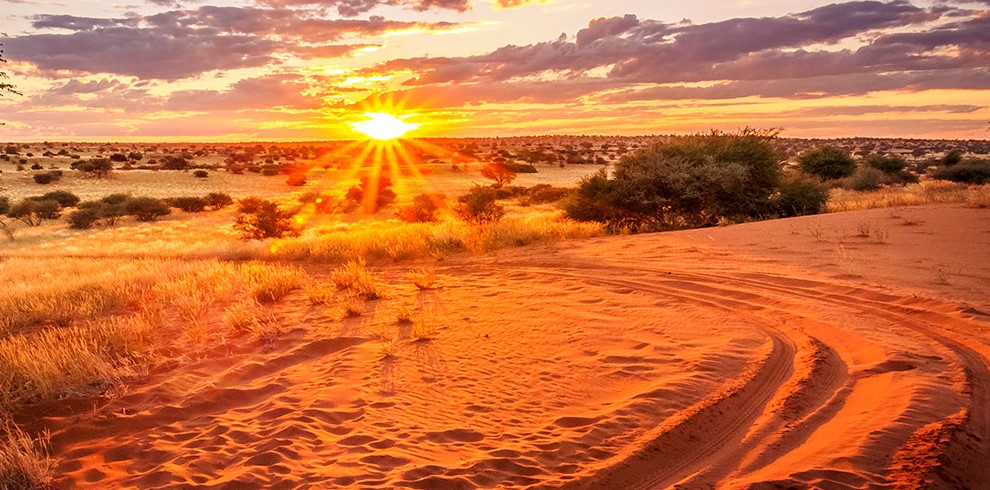
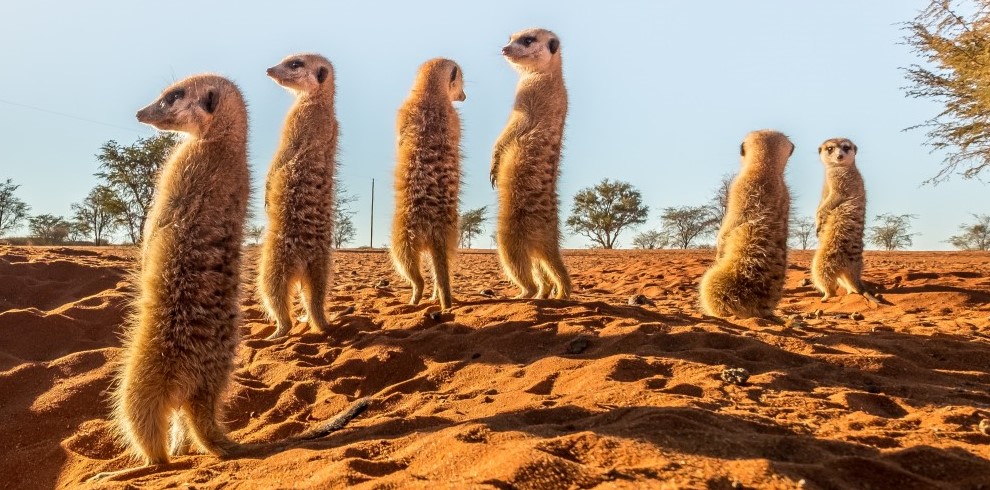


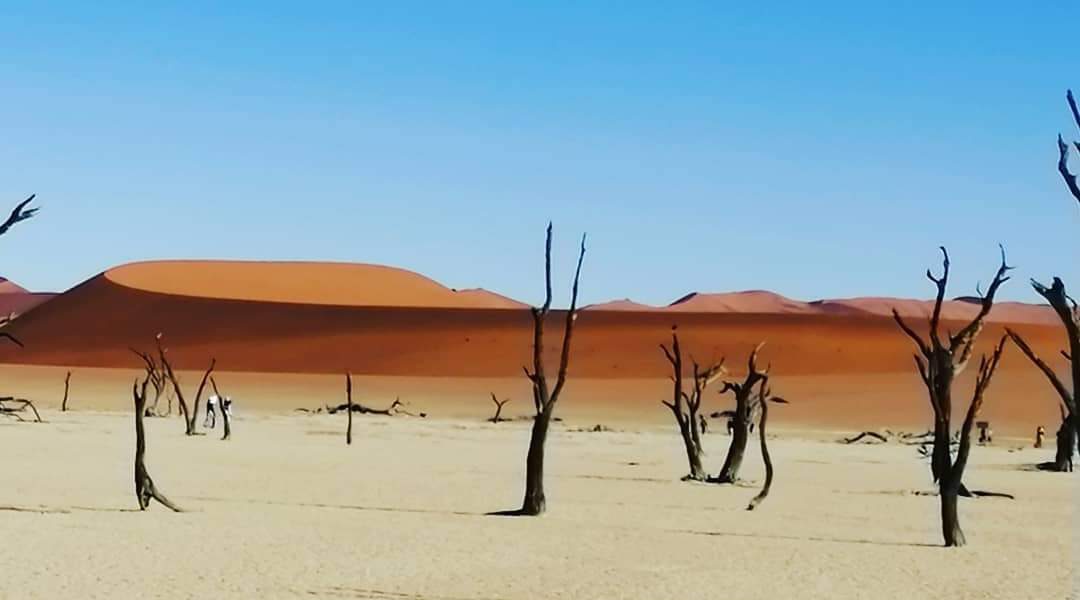
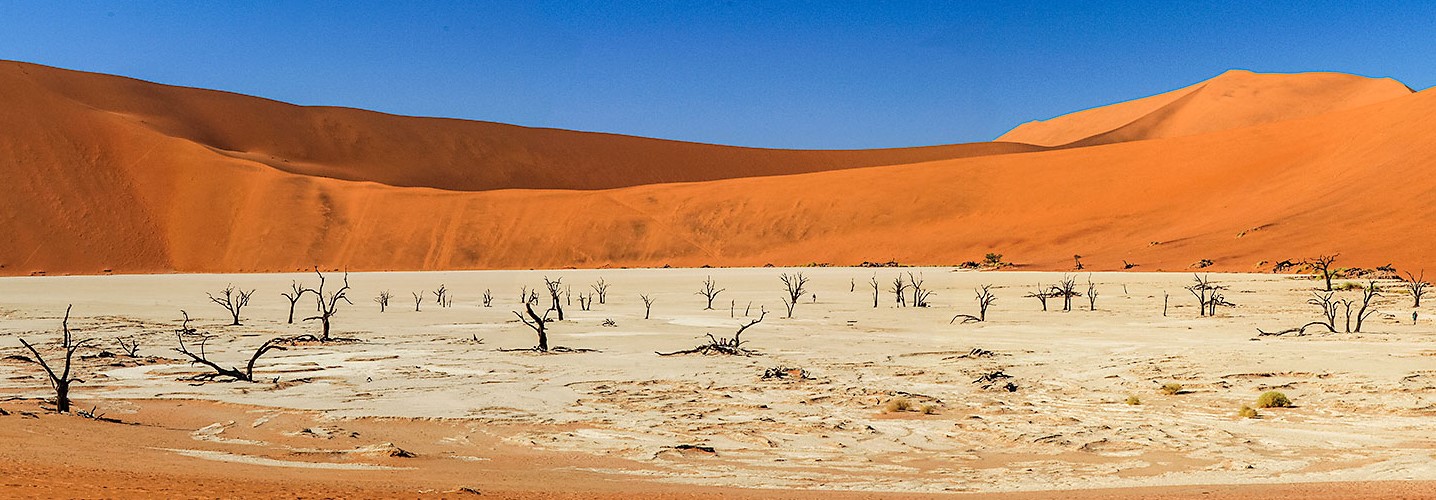






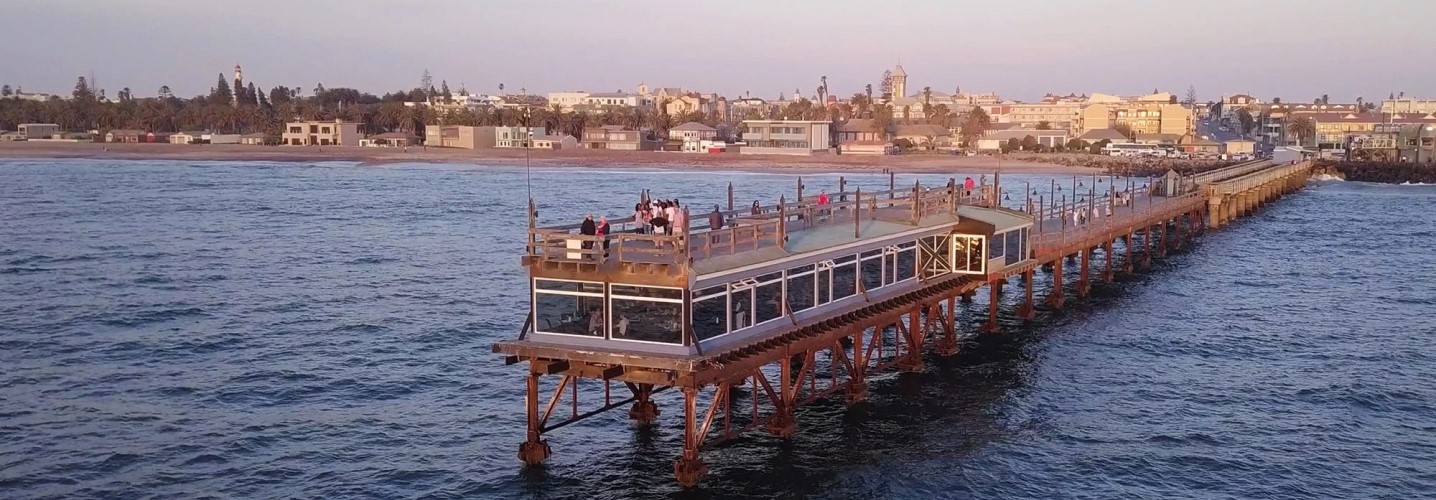













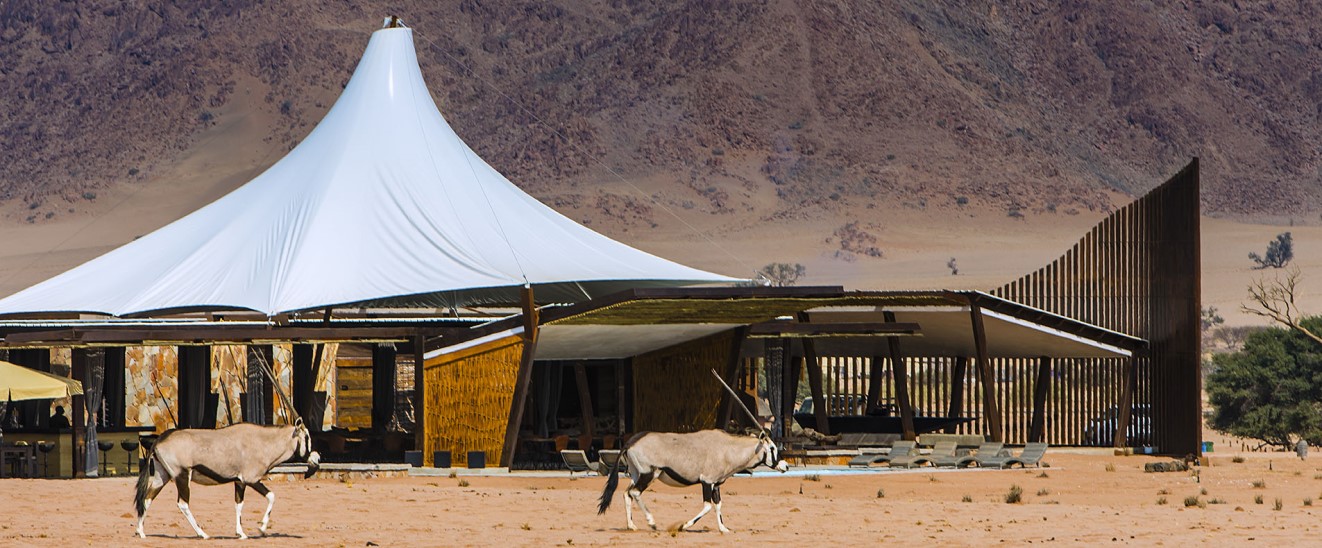

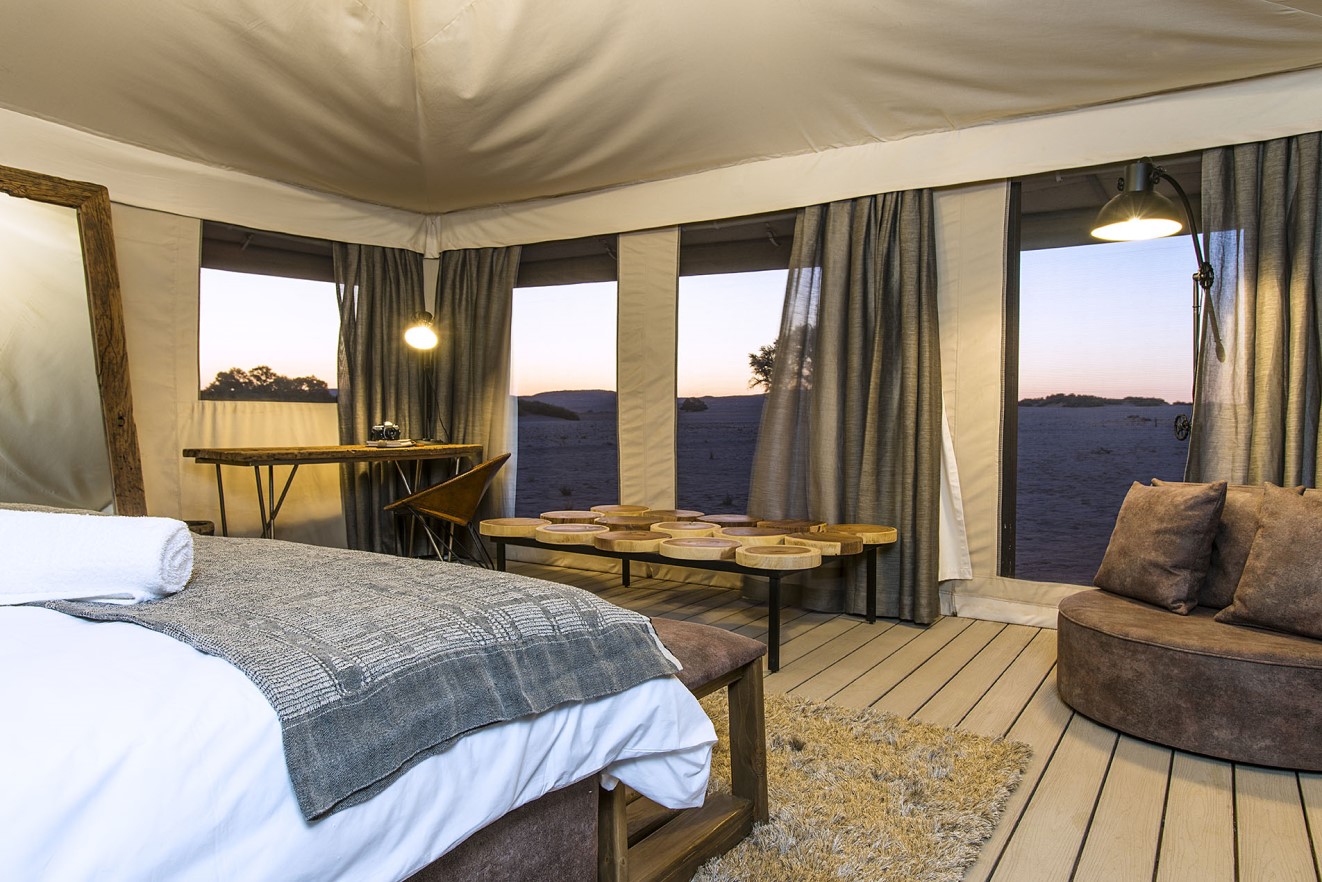
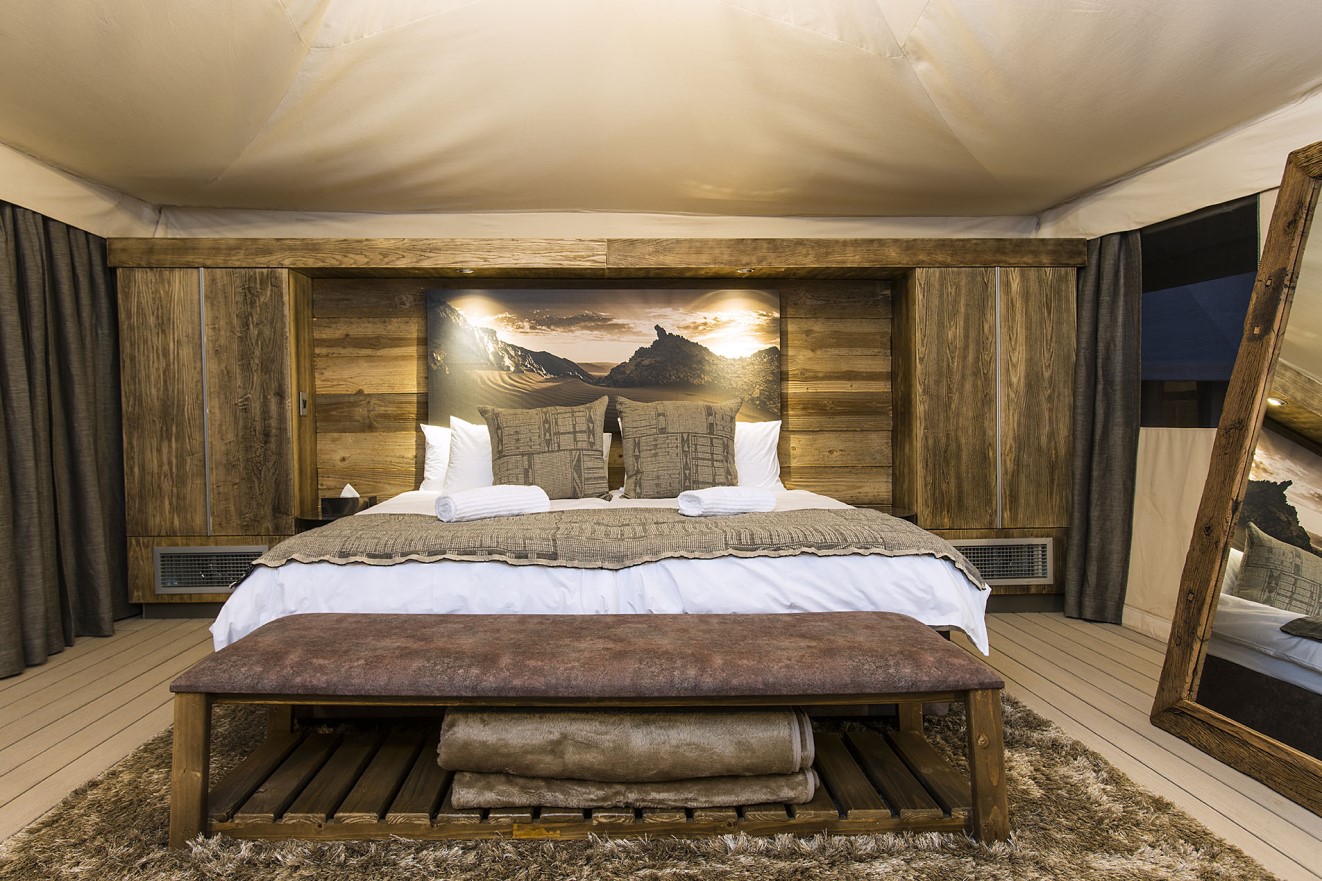
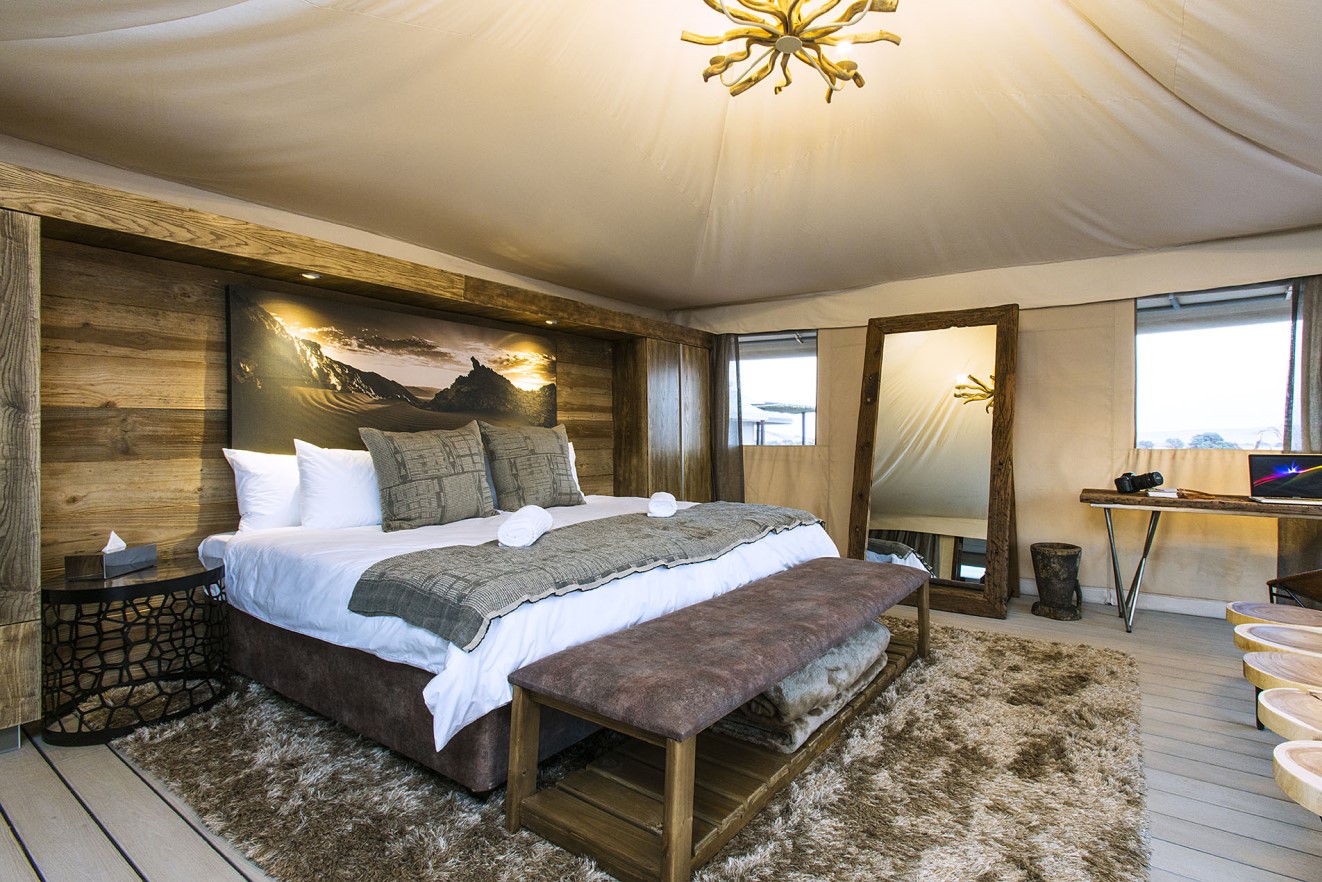























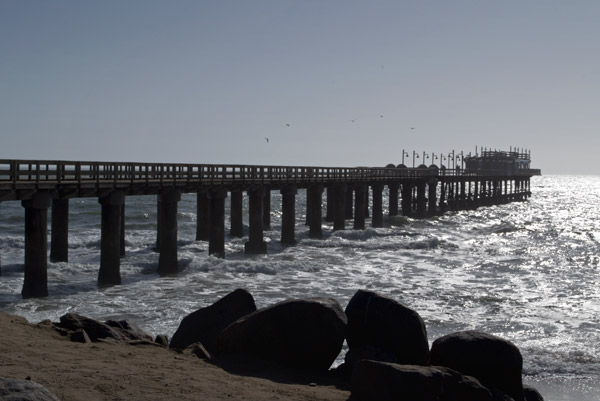












Write a Review